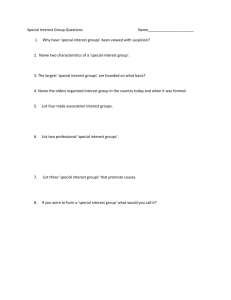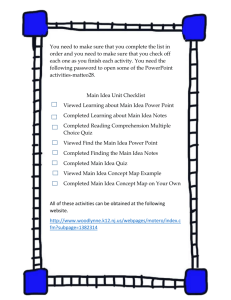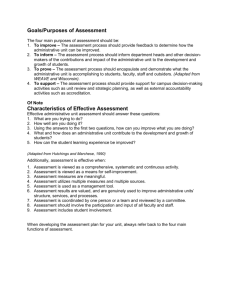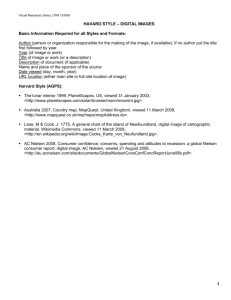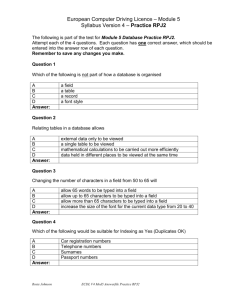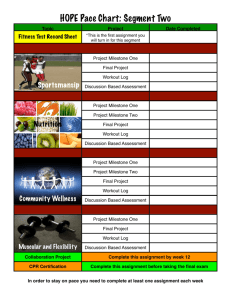Teaching History with Primary Sources
advertisement
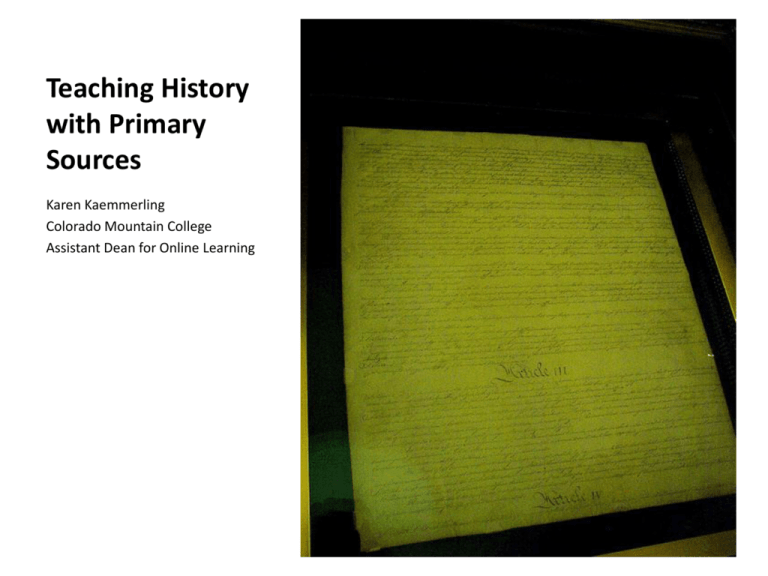
Teaching History with Primary Sources Karen Kaemmerling Colorado Mountain College Assistant Dean for Online Learning CCCNS I. Four general goals integrate history with workplace skills: • A. Acquire information from many sources • B. Break complex and multiple sources of information down into parts to create clearer understanding • C. Understand the impact of time and space on perspective • D. Develop narrative structures and arguments based on evidence II. Throughout the course, students should be introduced to course content, practice using course content, and demonstrate they can: • A. Describe how peoples, groups, cultures, and institutions covered in this course change over time • B. Understand the events covered in the course in historical context and recognize how social, cultural, gender, race, religion, nationality and other identities affect historical perspective • C. Communicate orally and in writing about the subject of the course and select and apply contemporary forms of technology to solve problems and compile information • D. Use different resources for historical research, including libraries, databases, bibliographies and archives • E. Analyze secondary sources and recognize differences in historical interpretation • F. Identify types of primary sources, the point of view and purpose of their author or creator • G. Create substantive writing samples which employ critical analysis of primary and secondary sources, and document those sources correctly • H. Construct knowledge in the discipline and synthesize historical narratives and timelines from primary and secondary sources, maps, and/or artifacts and critically analyze, interpret and evaluate many different points of view to construct historical arguments Milestone https://www.milestonedocuments.com • “The history textbook of the future is not a textbook. It's an affordable, interactive, digital service with primary sources at the core. The future is now.” • Primary Source Database designed for 5 main course types: – History, American Studies, Political Science, Religious Studies, and Social Studies (9-12) • Cost 20 dollars per student • The Milestone documents include additional information and resources to help with analysis. • Helpful, easy to access staff • Reporting Tools • Student features (Notes, Highlighting, Sharing) – 3 used highlighting – 1 used notes feature – 5 used sharing feature Other Content Sources • http://www.learner.org/biographyofamerica/p rog01/index.html (Links to an external site.) • http://ahp.gatech.edu/ • http://www.loc.gov/ • http://www.archives.gov/ • http://www.digitalhistory.uh.edu/ • Other: youtube, Films on Demand, Virtual Library Purchase Stats 30 25 Capacity 20 Registered 15 Purchased Passed 10 5 0 Fall 121 Spring 121 Spring 122 Number of Primary Sources 60 Number of Sources 50 40 Average Visitation of 1 Source 30 20 Average Number of Sources viewed by 1 student 10 Active Milestone User Average 0 Fall 121 Spring 121 Spring 122 Fall HIS 121 Stats • 54% of the students visited John Smith: Generall Historie of Virginia • 2 who did not register for Milestone and remained active in the course passed the class with a C or better Spring 121 Stats • 2 who didn’t register still active and passing • 65% viewed Virginia Act For Religious Freedom by Thomas Jefferson • 1 student viewed no documents. • 1 student viewed 32 and 1 viewed 1 Spring 122 • 1 who didn’t register still not active or passing course • The average visitation for one source was 25% of the students • 80% visited Homestead Act • 0 students viewed no documents. • 2 students viewed 30 and 1 viewed 1 What did we learn from the data? • The average primary source visitation of 21% indicates that there was effective distribution of the primary sources in our discussions. • There were some documents that had 0% visits from students, and these might not be interesting enough to students and could be removed or others added. Assignment/Assessments • None of the documents were required • How to Read Primary sources • HIS 121 – 7 course discussion assignments directly “pushed” students to use primary resources in their responses. • HIS 122 – 8 course discussion assignments directly “pushed” students to use primary resources in their responses. • Final paper and presentation requires the use of at least 2 primary sources Content Discussion • Other sources can be found using your Milestone Account. Access instructions are in an announcement and in your syllabus. Use Primary Source: John Smith: The Generall Historie of Virginia and Articles: English Beginnings on the Chesapeake (1607–1676) and Native American Exclusion. • Compare the methods and messages of Martin Luther King Jr and Malcolm X. How were they viewed in their own life times and how has their legacy evolved over time? A good place to start is Milestone where I have preselected some materials that might help you better understand these events. Primary Source Discussion • Choose a topic covered between Jefferson's Presidency to the Antebellum Period • Choose a song written after WWII and up to 1970. Although they see dangers of unemployment and dehumanization, solid majorities feel that the computer revolution will ultimately raise production and therefore living standards (67%), and that it will improve the quality of their children's education (68%). Otto Frederick Time: “The Computer Moves In” (1983) The Great Society is a place where every child can find knowledge to enrich his mind and to enlarge his talents. Lyndon Baines Johnson: “Great Society” Speech (1964) Experiments in method have been freely made and have failed or succeeded after a fair trial. Robert A. Taft: “The Sound Basis for Federal Aid to Education” 1947 Few things are more sanctified in American life than academic freedom. It would be fatal to attack this as a principle. Lewis F. Powell: “Confidential Memorandum: Attack on American Free Enterprise System 1971 We may falter and stumble, but we cannot fail. Roy Wilkins 1957 A great diversity of thought should be allowed in colleges and universities. Fang Lizhi: “The Social Responsibility of Today’s Intellectuals” (1985) In America, with education and hard work, it really does not matter where you came from—it matters where you are going. Condoleezza Rice: Address to the Republican National Convention 2000 Our society and its educational institutions seem to have lost sight of the basic purposes of schooling, and of the high expectations and disciplined effort needed to attain them. A Nation at Risk 1983 …no ignorance or rusticity is so disgraceful, as airs of superiority over those, who have enjoyed no opportunity for learning, and whose manners are the misfortune of birth, and not of their own choosing. Horace Mann Common School Journal 1840 We would provide education at the expense of the states and the United States for every child, not only through grammar school and high school but through to a college and vocational education. Huey Long: “Share Our Wealth” Address (1935) Contact Information • kkaemmerling@coloradomtn.edu Education shall be directed to the full development of the human personality and to the strengthening of respect for human rights and fundamental freedoms. It shall promote understanding, tolerance and friendship among all nations, racial or religious groups, and shall further the activities of the United Nations for the maintenance of peace. Universal Declaration of Human Rights (1948) United Nations
